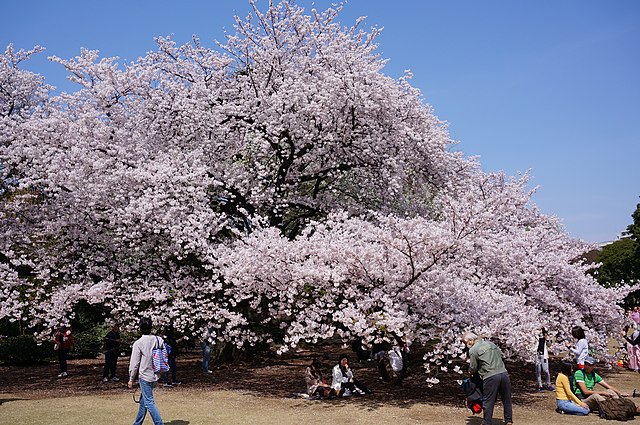National Cherry Blossom Festival
The National Cherry Blossom Festival is a spring celebration in Washington, D.C., commemorating the March 27, 1912, gift of Japanese cherry trees from Mayor Yukio Ozaki of Tokyo City to the city of Washington, D.C. Ozaki gave the trees to enhance the growing friendship between the United States and Japan and also celebrate the continued close relationship between the two nations. Large and colorful helium balloons, floats, marching bands from across the country, music and showmanship are parts of the Festival's parade and other events.
The Jefferson Memorial visible through cherry blossoms across the Tidal Basin
Eliza Ruhamah Scidmore was an early proponent of planting Japanese flowering cherry trees along the Potomac River.
Scidmore admired cherry blossoms in Mukojima, Sumida, Tokyo. Picture published in 1897.
The first gift of 2000 cherry trees was burned by the giftee after a few insects and nematodes were discovered
Prunus × yedoensis is a hybrid cherry tree between Prunus speciosa as father plant and Prunus pendula f. ascendens as mother. It is a hybrid born in Japan and one of its cultivars, Prunus × yedoensis 'Somei-yoshino' or Yoshino cherry, is one of the most popular and widely planted cherry cultivars in temperate regions around the world today. 'Somei-yoshino' is a clone from a single tree, and has been propagated by grafting all over the world. 'Somei-yoshino' inherits Edo higan's quality of blooming before the leaves unfold and it growing into a large-sized tree. It also inherits the characteristics of the Oshima cherry, which grows rapidly and has white flowers. These characteristics are favored and have become one of the most popular cultivars of cherry trees.
Prunus × yedoensis
Yoshino cherry at Tidal Basin, Washington, D.C. Yoshino cherries are the most common cultivar in the population of cherry trees donated to the city by Japan.
Inuyama Castle Keep Tower and Cherry Tree in Inuyama, Aichi prefecture, Japan.
Yoshino cherry in Shinjuku Gyo-en.








